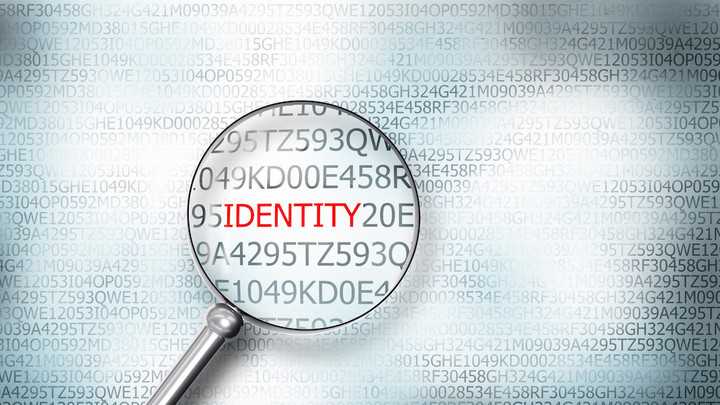E-Government on Blockchain: About Obstacles and Chances
Public administration offers and requires the same properties as blockchain: transparency, trust, and immutability. But does this predestine blockchain to be suitable for all e-government processes? Volker Skwarek explores potential use cases.

© Imilian | istockphoto.com
On the first glance, public administration offers and requires the same properties as blockchain and distributed ledger technology (BC/DLT): transparency, trust, and immutability (of once met decisions). This predestines BC/DLT as a technology of the first choice for public administrative processes. But is it really? As usual, this cannot be answered with a clear “yes” or “no”, but rather with a “depends”. It depends on whether BC/DLT can provide or perhaps improve properties that a government is lacking: There may be some governments more trustworthy, some more transparent, and others that are neither. This article presents potential use cases for blockchain in e-government, and evaluates whether or not a system change would really offer substantial advantages.
Blockchain-based e-voting: Better than traditional systems?
When changing or introducing a new system, it is worth questioning the reason or the reasonability: What is the advantage of the new system compared with the current one? Or are there even potentially more leaks and issues than there were before? E-voting on a blockchain – as an example – might be more transparent and immutable than traditional paper and counting-based systems, but other factors also have to be considered, such as the individual registration for an anonymous vote – a solvable challenge, but still a challenge – or the guarantee of free, individual and secret votes [1] in case of mobile and home-based voting. In a traditional system, the first is granted by the government by issuing only one ballot sheet per person.
But when starting blockchain-based e-elections, there has to be trust in the same government not to track the “anonymous” vote, which may be coupled with the ballot letter – although the original motivation for a blockchain was exactly this lack of trust. Equally, home-based ballots are already currently a security problem in elections [2, 3], and although they still remain an exception [3], with blockchain-based e-elections, home based voting – with all associated security issues – may even become standard practice.
Balancing the costs of problems and blockchain-based solutions
Another valid argument could be higher efficiency, increased speed of vote counting, lower expenses, and fewer irregularities of e-voting using blockchains. To achieve this, the voting system could stay the same as it is currently organized – e.g. in Germany, with local election sites, individually registered voters, and locally filled-in ballot sheets – but instead of a ballot sheet, a unique, one-time voting ID could be handed out onsite, which can be used on a local, networked, voting computer. Such a system can be very secure. However, there needs to be a balance between the severity of the problem to be solved using BC/DLT and the additional effort and cost of a secure, networked, transportable computer system: There will still be three or more people per site required to supervise the voting process. Furthermore, currently in the traditional system in Germany, all votes are usually evaluated nationwide within a few hours.
Therefore, such a system seems to be more important for nations with less trustful election processes – but here usually the access to the infrastructure is not given to that extent. As a result, it appears that a blockchain solution is not that predestined for this application.
Considering the arguments above, use cases and applications have to be carefully evaluated: Very often keywords such as immutabilty, trust, or intermediarylessness are used without arguing to what extent these criteria are not fulfilled in current systems. Furthermore, additional expenses and effort for the introduction of a new (blockchain-based) system need to be calculated and evaluated. This effort has to be compared with the potential financial or trust-damage of irregularities of current systems – not to forget new problems and security leaks which may arise as a result of potential changes.
Blockchain and the need for intermediaries
A very famous example for potentially changing an administrative process to the blockchain is the Swedish land registry [4]. Efficiency improvements have been proven in this pilot project. And yet, the project team admits that this will most probably nevertheless not go live, as the contracts, the individuality of the signature, and the correctness of the whole process of land registry is so sensitive that it needs notarial proof [5]. Hence, there will still be the need for a central, trusted intermediary to supervise all process steps.
Consequently, it should be considered critically whether or not a blockchain may support or improve current administrative processes, at least regarding European administrative and legal standards.
E-identity & the self-sovereign identity using a blockchain-based approach
Therefore, BC/DLT should be used to empower or – even better – create new administrative services. Here, the e-identity can serve as both a positive and a negative example for a blockchain utilization. In some countries, such as Germany, the personal ID-card is already issued as an electronic ID. This means it can already be used for some – still few – online identification processes. There is no actual reason why this centrally-administered process should not be trusted. Especially given that an official identity is created and issued only by the government, there is no reason to mistrust it. From this perspective and for this application, there is no advantage to using blockchain-based identities, although a major issue concerning the current e-identity is the complexity and cost of interfaces. But this needs to be compared with the cost of introducing a similar, blockchain-based identity system, and ultimately, this is more a political than a financial issue. And given that the maintenance of the e-identity and its access is under the responsibility of the governmental administration, the cost model for its access is also the same political-financial decision.
However, as soon as a centrally-administered identity is extended into a self-sovereign identity, the interaction between the governmental identity database and the traceable use and adaptation of this data becomes important. In the concept of self-sovereign identity, the individual is self-responsible for the content and the use of the identity data. This requires tracking and tracing of uses of and changes in personal identity data. Using a blockchain for this application is of advantage, as even changes of identity data over the time can be proven and traced back to the same root identity. If required, this root identity may still be connected to an officially issued identity, such as given in an official administrative process. Self-sovereign data themselves are kept offchain, so they are under full control of the user, and only hashes of the data are stored on the chain. This may be an example of how and where a process of e-government may be supported by a blockchain.
Another applicable use case is the transparency of partly secret, time-constrained processes such as public tenders with hard deadlines. Here, the submitted document could be kept secret, but its hash can be registered on a public tender blockchain and the pseudonymous address could be used as a one-time address, which is made public after closing. With such a system, an easy proof can be delivered for a timely submission of all relevant documents by the parties under consideration.
Blockchain e-government solutions and feasibility
Last but not least, it should always be kept in mind that a government blockchain infrastructure such as provided by the state of Estonia may reduce the operating and maintenance cost for many official processes, such as the ideas and considerations in the article above. But when referring to this example, it has to be recognized that the complexity of such a system-change may differ significantly according to sizes and populations of nations and their political (federal) systems.
Finally, it can be concluded that there is a potential for BC/DLT to support e-government considerations, but it is absolutely necessary to clearly evaluate whether problems are really solved, or just simply shifted into another domain. The cost of a system change and the potential of new security leaks must also be taken into consideration; something which is rarely done when considering blockchain ideas for e-government.
References
- Art 38 of the German Constitution
- WELT, “Briefwahl: Mehr Menschen wählen zu Hause – Experten sind kritisch”, DIE WELT, 10-Sep-2017
- Bertelsmann Stiftung, “Entwicklung und Perspektiven der Briefwahl in Deutschland”, 2016.
- “Landmäteriet”, Lantmateriet.se. [Online]. Available at: https://www.lantmateriet.se/sv/. [Accessed: 11-Aug-2018].
- T. Lyons, “Workshop Report: Government Services”, European Blockchain Observatory Forum, Brussels, 3, July 2018, p. 5
Volker Skwarek is an electrical engineer who has spent many years in managing positions of electronics development mostly in the automotive sector. Now he is Professor for embedded systems at the Hamburg University of Applied Sciences. At the university, his research and research teams focus on foundations and applications of (industrial) IoT connections and secure data transfer with a special focus on secure blockchain connections and smart contracts.
With this background he is convener of ISO TC 307 WG 3 Smart Contracts, participates in standardization and European focus groups for Blockchain and Distributed Ledger Technologies and he also supports start-ups, mainly in technical considerations of blockchains.
Please note: The opinions expressed in Industry Insights published by dotmagazine are the author’s own and do not reflect the view of the publisher, eco – Association of the Internet Industry.





